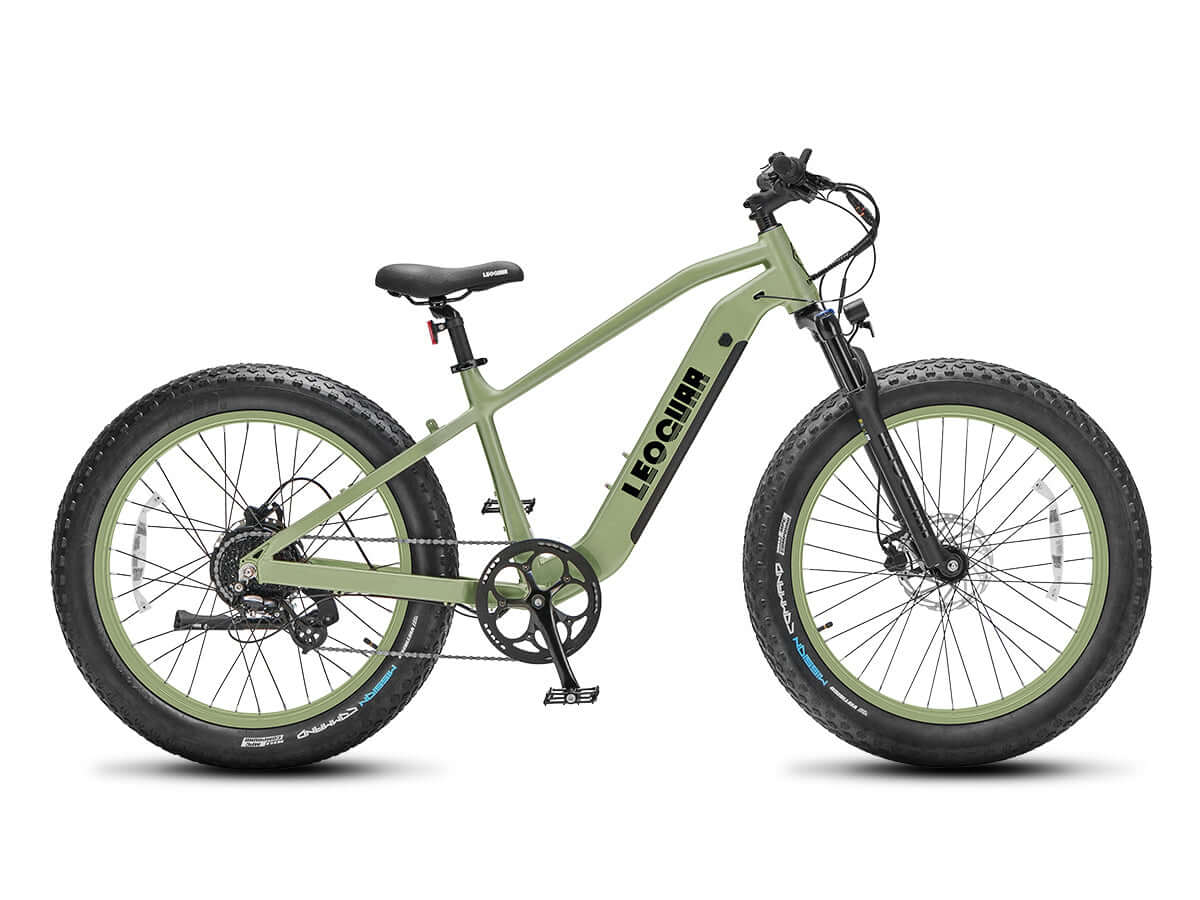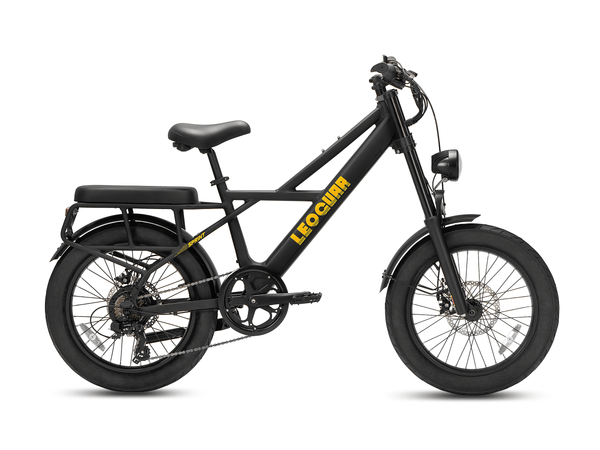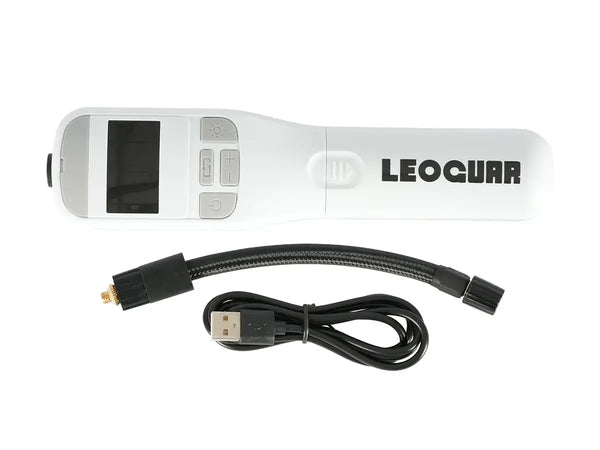
Electric Pump Guide: Fast Ebike Tire Inflation Tips
The Easy Tire Inflation Solution
Keeping the right tire pressure on an e-bike is important, but it can feel like hard work. Manual pumps make you tired. Their gauges often show wrong numbers. You need exact pressure for the best performance and safety, but you don't have time to guess. This is where the modern solution helps: the portable electric pump. It's fast, accurate, and easy to use for perfect tires every time. In this guide, we'll show you exactly how to pick the right electric pump, use it like an expert, and keep your e-bike rolling smoothly and safely.
Why E-bikes Need More
An e-bike isn't just a regular bike with a motor. It's a heavier, more powerful machine that puts special demands on its tires. Correct tire pressure is not just a good idea—it's needed for performance, safety, and even battery life. Tires with too little air can greatly reduce your range, make handling slow, and raise the risk of dangerous flats. In fact, proper inflation can improve battery life by up to 5-10%. While a manual pump might work eventually, an electric pump offers clear benefits for e-bike owners.
- Precision: Digital gauges and auto-shutoff features make sure you hit the exact PSI recommended for your weight and riding style, removing guesswork.
- Speed: What takes several minutes of hard manual pumping can be done in 60-90 seconds with an electric pump.
- Less Effort: Simply set the pressure, press a button, and let the tool do the work. This helps riders who may lack the physical strength for high-pressure manual pumps.
- Better Safety: Always accurate pressure reduces the risk of flats and ensures predictable handling, especially at higher e-bike speeds.
Choosing Your Electric Pump
Picking the right electric pump is the most important step to ensure an easy experience. Not all pumps are made the same, and the specific needs of an e-bike—with its higher-pressure tires—mean you need to look for certain key features. This section breaks down what really matters, moving beyond basic advice to help you choose a tool you'll be happy with for years to come.
| Feature | What to Look For | Why It Matters for E-bikes |
|---|---|---|
| Max PSI | At least 100-120 PSI | E-bike tires often require 40-70 PSI. A pump with a higher max PSI works less hard and inflates faster without overheating. |
| Power Source | Rechargeable Battery or 12V Corded | A rechargeable battery offers ultimate portability for trailside repairs. A 12V corded model provides unlimited power from a car for home use. |
| Valve Compatibility | Dual-head nozzle or included adapters | E-bikes use either Schrader (car-style) or Presta (thin) valves. Your pump must be able to connect to your specific valve type securely. |
| Smart Features | Digital Gauge & Auto-Shutoff | These are must-haves. Set your target pressure, and the pump stops automatically, preventing dangerous over-inflation and ensuring perfect accuracy. |
| Portability | Compact and lightweight design | For an emergency kit, choose a small model that fits in a bag or backpack. For the garage, a slightly larger, more powerful unit is fine. |
Maximum PSI (Pounds per Square Inch)
E-bike tires, especially those on road or commuter models, often require pressures between 40 and 70 PSI. To handle this without struggling, your electric pump needs a good performance buffer. We strongly recommend choosing a model with a maximum rated pressure of at least 100 PSI, with 120 PSI being even better. A pump that can easily exceed your target pressure will run cooler, fill the tire faster, and last longer than one that is constantly working at its limit.
Power Source: Battery vs. 12V
Your choice here depends on where you'll do most of your inflating.
Rechargeable Battery: These pumps are the champions of portability. You can throw one in your backpack for a long ride or use it in your garage without worrying about cables. They are perfect for on-the-go adjustments and emergency flat repairs far from a power source.
12V Corded: These models plug into the 12V port in a car. Their main advantage is unlimited runtime, so you never have to worry about a dead battery. They are an excellent choice for a home garage setup if your car is nearby, but they lack the freedom of a battery-powered unit.
Valve Compatibility: Schrader vs. Presta
Bikes mainly use two types of valves, and your pump must match. A Schrader valve is wider, like the one on a car tire. A Presta valve is thinner and has a small locknut on top that you must unscrew before inflating. The best electric pump models come with a dual-head nozzle that fits both types without issue, or they include a screw-on adapter. Before buying, confirm your electric bike valve type and ensure the pump works with it. Understanding this is a key part of finding your ideal tire pressure, as the valve is your gateway to proper inflation.
Smart Features: Auto-Shutoff and Digital Gauges
For an e-bike owner, these are must-have features. A clear digital screen allows you to see the current pressure and set your exact target PSI. The auto-shutoff function is the most important feature for safety and convenience. Once you set your desired pressure (e.g., 55 PSI), you can start the pump and walk away. It will automatically stop when it reaches the target, completely preventing the risk of over-inflation, which can lead to a blowout.
Portability and Size
Consider your main use case. If you want a pump for your emergency roadside kit, look for a compact, lightweight model, sometimes called a "mini-inflator." These are small enough to fit in a bag or even a large jersey pocket. For home use, a slightly larger and more robust unit might offer faster inflation speeds and a bigger battery, making it a great addition to your workshop.
Pre-Inflation Checklist
Before you connect the pump, taking 30 seconds to prepare will prevent common mistakes and ensure a perfect result. Think of it as a pro mechanic's routine. Following these three simple steps will make the process smooth and error-free.
- Know Your Target PSI: Look on the sidewall of your e-bike's tire. You will see text that says "Inflate to XX-XX PSI" (e.g., "40-65 PSI"). This is your recommended pressure range. Never inflate below the minimum or above the maximum number. Your ideal pressure within this range depends on your weight and riding surface.
- Identify Your Valve Type: Look at the valve stem on your wheel. Is it thick and sturdy like a car's tire valve? That's a Schrader valve. Is it thin with a small nut on the very tip? That's a Presta valve. Knowing which one you have is important for connecting the pump nozzle correctly.
- Inspect the Tire: Do a quick visual and physical check of the tire's surface. Gently run your fingers over the tread to feel for any embedded thorns, tiny pieces of glass, or sharp stones. If you find something, it's better to remove it now before you inflate the tire and potentially push the object deeper into the tube.
Step-by-Step Inflation Guide
Here is the foolproof method for inflating your e-bike tire with an electric pump. We've written this as if we're right there with you, describing the sounds and sensations you'll experience.
- Prepare the Valve. First, unscrew and remove the plastic dust cap from the valve. If you have a Presta valve, you must also unscrew the small metal locknut at the very tip until it's loose (don't remove it completely). Gently press the tip to release a short hiss of air; this ensures the valve isn't stuck.
- Connect the Pump Nozzle. Firmly press the pump's nozzle onto the valve stem. If it's a screw-on type, thread it on until it's snug. You want a tight, secure seal. You might hear another brief hiss of air as you connect it, which is perfectly normal. A good seal is the key to an accurate reading and efficient inflation.
- Set Your Target PSI. Turn on your electric pump. The digital display will light up and show the current pressure in the tire. Use the "+" and "-" buttons on the pump to set your target PSI to the pressure you identified from the tire's sidewall.
- Start the Inflation. Press the "start" or "power" button to begin pumping. The pump will start to make a loud buzzing or whirring noise. This is normal; it's the sound of the small motor and compressor working. Don't be alarmed by the volume.
- Monitor the Process. Watch the digital gauge as the pressure number climbs. This is where the magic happens. You don't need to do anything but wait. Thanks to the auto-shutoff feature, the pump will run until it reaches your preset target and then stop on its own. The reliability of these devices is well-established, as shown in extensive testing of portable tire inflators by automotive experts.
- Disconnect and Finish. As soon as the pump stops, quickly and decisively remove the nozzle from the valve. The faster you do it, the less air you'll lose. If you have a Presta valve, immediately tighten the small locknut you loosened earlier. Finally, screw the plastic dust cap back on to protect the valve from dirt and moisture.
Pro Tips and Troubleshooting
Even with the best tools, you can sometimes run into minor issues. Here are solutions to the most common problems, along with a tip for dialing in your perfect ride feel.
What if the pump won't start?
This is almost always a power issue. First, check the pump's battery level. If it's low, charge it. If you're using a 12V corded model, ensure the plug is securely seated in the car's accessory port and that the port has power.
Why is air leaking from the nozzle?
A hissing sound from the valve connection means you don't have a good seal. Disconnect the nozzle and re-attach it, making sure it's pressed on straight and firmly. If it's a screw-on hose, check that the threads are not crossed. Over time, the rubber gasket inside the nozzle can wear out; check it for cracks or damage.
The pump stops before reaching the target PSI?
If the pump stops well short of your target, it could be one of two things. The most likely cause is a low battery that can no longer provide enough power to fight the high pressure in the tire. Recharge it and try again. Alternatively, the pump may have an overheating protection feature. If it's been running for a long time (e.g., filling multiple tires), let it cool down for 10-15 minutes.
How do I find the perfect pressure?
The range on your tire's sidewall is a starting point. For a more comfortable ride with better grip on rough surfaces, try a pressure at the lower end of the range. For maximum speed and battery efficiency on smooth pavement, inflate toward the higher end of the range. Experiment within the recommended limits to see what feels best for you.

Ride with Confidence
Mastering the use of an electric pump is a game-changer for any e-bike owner. It transforms electric bike tire maintenance from a frustrating chore into a quick, simple, and satisfying task. An electric pump saves you time and effort, but more importantly, it provides the precision needed to enhance your e-bike's safety, extend its battery range, and deliver the best possible ride quality. With perfectly inflated tires every time, you can ride with the confidence and peace of mind that comes from knowing your bike is performing at its absolute best.
Frequently Asked Questions
1. Q: How often should I check my e-bike tire pressure?
A: Check your tire pressure at least once a week or before every ride. E-bike tires naturally lose 1-2 PSI per week, and proper pressure is crucial for safety and performance.
2. Q: Can I use a regular car tire pump on my e-bike?
A: Yes, if your e-bike has Schrader valves (the same type as cars). However, car pumps are often too powerful and can over-inflate bike tires quickly, so use caution and check pressure frequently.
3. Q: What happens if I over-inflate my e-bike tires?
A: Over-inflation can cause a harsh ride, reduced traction, increased risk of punctures, and in extreme cases, tire blowouts. Always stay within the PSI range printed on your tire sidewall.
4. Q: How long does a rechargeable electric pump battery last?
A: Most quality electric pumps can inflate 10-15 bike tires on a single charge. Battery life depends on the pump's capacity, tire size, and target pressure.
5. Q: Should I remove the battery from my electric pump when storing it?
A: No, modern electric pumps are designed to be stored with the battery installed. However, charge the battery every 3-6 months if you don't use the pump regularly to maintain battery health.










































Leave a comment